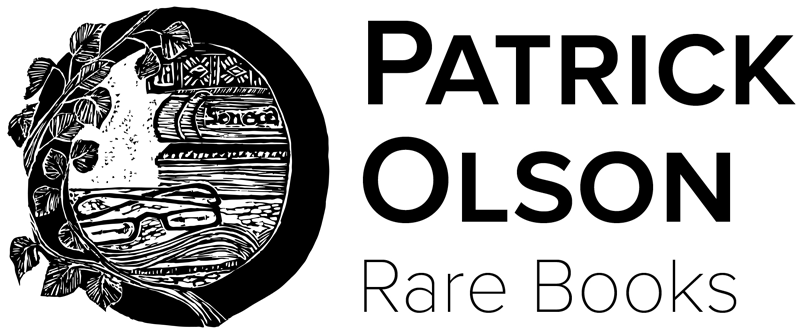Landmark of Swiss children's literature







Landmark of Swiss children's literature
Tischzucht [Family of Dietrich Meyer at Table]
engraved by Conrad Meyer | poem by Johann Wilhelm Simler
Zurich: Johannes Meyer, [ca. 1690?]
1 broadside | Full-sheet | 412 x 344 mm
A later state of this landmark print, the first in Zurich's series of annual New Year's greetings that endured for two and a half centuries, and one with an exceptionally heartwarming association with the city's children. The broadside exists in at least three different states, though these are often conflated as a single 1645 issue. In its earliest state, and certainly a sharper impression than ours, the engraving lacked the Ao. 1645 beside Conrad Meyer's name and the letterpress lacked an imprint. Records indicate just 400 copies of that first state were printed, to be distributed by the city library. Sometime in the later 17th century, Johannes Meyer, Conrad's son, reissued the broadside under his own imprint. Johannes was born in 1655, so we can't imagine our version would have been issued earlier than about 1675. For what it's worth, the British Museum dates it ca. 1690. ¶ Much more than a holiday greeting, Bettina Hürlimann takes this as the starting point of children's literature in German-speaking Switzerland. It's a rather famous print, "certainly the most well known New Year's broadside of all" (Sulmoni), and the foundation of a lasting ephemeral tradition in Zurich—one that continued until 1916, according to the city library. It was the brainchild of Simler and Conrad Meyer, who coordinated its publication with the city library. They were hardly the first to conceive such a greeting—woodcuts offering good wishes for the new year can be traced to at least 1460/1470—but you'll be hard-pressed to find one with a more wholesome origin story. "An old Zürich custom demanded that the members of all kinds of scientific or public bodies should make a contribution towards the cost of heating their local drinking-places. This occurred at the New Year and the moneys were delivered by children, who were then treated to Veltliner wine and 'Tirggeli', a rock-hard pastry which is still a favourite in Zürich today if nowhere else. Now whether such sinful gluttony was forbidden during the serious events of the Thirty Years War, or whether mind triumphed over molars, one thing is certain: when, in 1645, the townschildren of Zürich arrived at the city library (founded in 1629) with the 'Stubenhitzen'...and with the New Year's greetings from their parents, they received, instead of the expected sweetmeats, a beautiful copperplate engraving with a little bit of poetry underneath it. This was the first Neujahrsstuck" (Hürlimann). ¶ Beyond its place in the canons of ephemera and children's literature, it's also simply an illuminating print, illustrative of bourgeois dining habits in 17th-century Switzerland. And Conrad used his own family as that model of bourgeois society. His father Dietrich is seated at the corner of the table, in the tallest armchair and with the largest goblet. To his left is Elisabeth Bossart, Dietrich's third wife; Conrad's wife, Susanna Murer, sits to Dietrich's right. Addressed directly to children, Simler's poem makes plain the intended juvenile audience. It's clear that children are expected to assist with setting the table. They should wash their hands, of course; turn away when blowing your nose, coughing, or sneezing; mix your wine with water; and don't lick your fingers. The broadside essentially blends juvenile conduct literature with a New Year's greeting, for a telling ephemeral relic rich in juvenile dining instruction. ¶ We find just one other complete copy in auction records, across the print's various states, as the letterpress content is often missing. We find only one that may be the original 1645 issue, but again, lacking the bottom half.
CONDITION: Printed on the recto only of a full sheet of laid paper. ¶ Recently mounted on a sheet of quality tissue paper, and done well; several hard creases, with occasional small holes along them; fore-edge a bit tattered (though now stabilized), with some marginal loss (not affecting the content); moderately soiled.
REFERENCES: Geschichte der Schweizerischen Neujahrsblätter (1856-1858), p. 4 (for attribution of the poem, plus production and distribution details of the original press run); Martina Sulmoni, 'Einer Kunst- und Tugendliebenden Jugend verehrt': Die Bild-Text-Kombinationen in den Neujahrsblättern der Burgerbibliothek Zürich von 1645 bis 1672, (2007), p. 128 (cited above; "Tischzucht is not only the first New Year's broadside; more than that, it is one of the very first works that Meyer produced after his return from his travels through Germany toward the end of 1642"); Bettina Hürlimann (Brian W. Alderson, tr.), Three Centuries of Children's Books in Europe (1967), p. 246 (cited above); Peter Parshall, "53. Christ Child with a New Year's Wish," Origins of European Printmaking (2005), p. 198 (a German greeting of ca. 1460/1470); Andrew Morrall, " The Family at Table: Protestant Identity, Self-Representation and the Limits of the Visual in Seventeenth-Century Zurich," Art and Religious Reform in Early Modern Europe (2018), p. 102 ("aimed specifically at the young to teach them good manners and proper comportment at table")
Item #836
